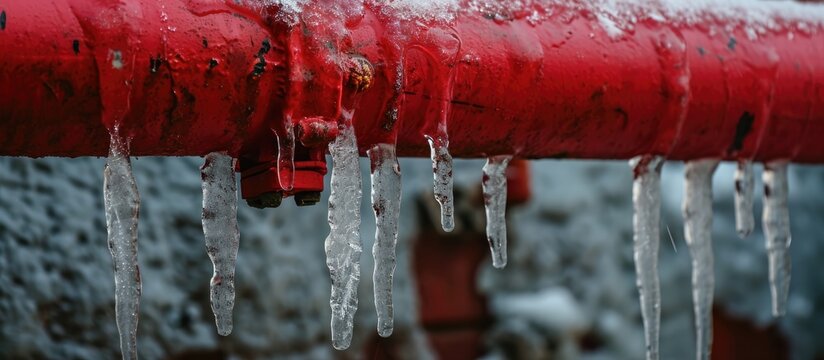Tips to Keep Your Pipes from Cold Weather Issues: Essential Advice
Tips to Keep Your Pipes from Cold Weather Issues: Essential Advice
Blog Article
We have encountered this article relating to Preventing and dealing with frozen pipes listed below on the web and thought it made perfect sense to relate it with you here.

Winter can ruin your pipes, especially by freezing pipes. Here's just how to avoid it from happening and what to do if it does.
Intro
As temperatures decrease, the risk of icy pipelines boosts, potentially bring about costly repairs and water damages. Recognizing exactly how to avoid icy pipes is vital for homeowners in chilly environments.
Understanding Frozen Pipes
What creates pipes to freeze?
Pipes freeze when subjected to temperature levels listed below 32 ° F (0 ° C) for extended periods. As water inside the pipes freezes, it broadens, putting pressure on the pipe walls and potentially causing them to rupture.
Dangers and damages
Frozen pipes can lead to supply of water disruptions, residential property damage, and pricey repair work. Burst pipelines can flood homes and create substantial structural damage.
Indications of Frozen Pipes
Determining frozen pipes early can prevent them from rupturing.
How to determine icy pipes
Look for lowered water flow from taps, unusual smells or noises from pipelines, and noticeable frost on exposed pipes.
Avoidance Tips
Insulating at risk pipes
Wrap pipes in insulation sleeves or utilize warmth tape to protect them from freezing temperatures. Concentrate on pipelines in unheated or outside areas of the home.
Home heating techniques
Maintain indoor spaces sufficiently warmed, especially areas with pipes. Open closet doors to allow warm air to distribute around pipelines under sinks.
Shielding Outside Plumbing
Garden hoses and outdoor taps
Separate and drain garden hose pipes before winter months. Install frost-proof spigots or cover exterior faucets with insulated caps.
What to Do If Your Pipelines Freeze
Immediate activities to take
If you suspect icy pipelines, maintain faucets open up to relieve stress as the ice melts. Utilize a hairdryer or towels soaked in hot water to thaw pipes slowly.
Long-Term Solutions
Structural modifications
Take into consideration rerouting pipelines away from outside walls or unheated locations. Include added insulation to attics, cellars, and crawl spaces.
Upgrading insulation
Invest in top notch insulation for pipes, attics, and walls. Proper insulation helps preserve consistent temperatures and reduces the threat of frozen pipes.
Verdict
Avoiding frozen pipes needs positive steps and fast reactions. By understanding the causes, indications, and preventive measures, homeowners can protect their plumbing during cold weather.
5 Ways to Prevent Frozen Pipes
Drain Outdoor Faucets and Disconnect Hoses
First, close the shut-off valve that controls the flow of water in the pipe to your outdoor faucet. Then, head outside to disconnect and drain your hose and open the outdoor faucet to allow the water to completely drain out of the line. Turn off the faucet when done. Finally, head back to the shut-off valve and drain the remaining water inside the pipe into a bucket or container. Additionally, if you have a home irrigation system, you should consider hiring an expert to clear the system of water each year.
Insulate Pipes
One of the best and most cost-effective methods for preventing frozen water pipes is to wrap your pipes with insulation. This is especially important for areas in your home that aren’t exposed to heat, such as an attic. We suggest using foam sleeves, which can typically be found at your local hardware store.
Keep Heat Running at 65
Your pipes are located inside your walls, and the temperature there is much colder than the rest of the house. To prevent your pipes from freezing, The Insurance Information Institute suggests that you keep your home heated to at least 65 degrees, even when traveling. You may want to invest in smart devices that can keep an eye on the temperature in your home while you’re away.
Leave Water Dripping
Moving water — even a small trickle — can prevent ice from forming inside your pipes. When freezing temps are imminent, start a drip of water from all faucets that serve exposed pipes. Leaving a few faucets running will also help relieve pressure inside the pipes and help prevent a rupture if the water inside freezes.
Open Cupboard Doors
Warm your kitchen and bathroom pipes by opening cupboards and vanities. You should also leave your interior doors ajar to help warm air circulate evenly throughout your home.

I'm very excited about How to prepare your home plumbing for winter weather and I hope you enjoyed reading the entry. In case you enjoyed our post if you please do not forget to share it. Many thanks for your time spent reading it.
Call Today Report this page